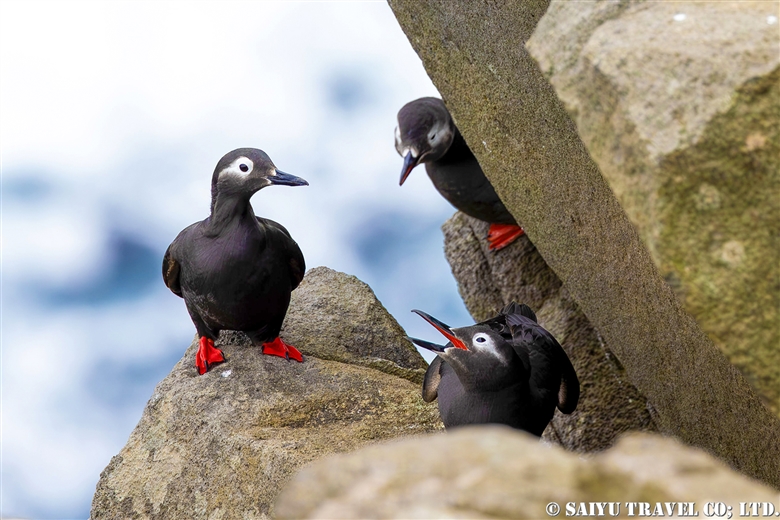
Common murre, Common guillemot Uria aalge
Common Murre or Common Guillemot has a distinctive penguin-like appearance due to its legs positioned at the back of its body. In Japan, they breed only in one place, a cliff cave near the red rocks on Teuri Island. The breeding site of the cave can only be observed from the boat, but they can sometimes be seen floating above the sea from the Akaiwa Observatory. In 2002 their numbers were reduced to 13, but now(2023) exceed 100 and is steadily increasing.
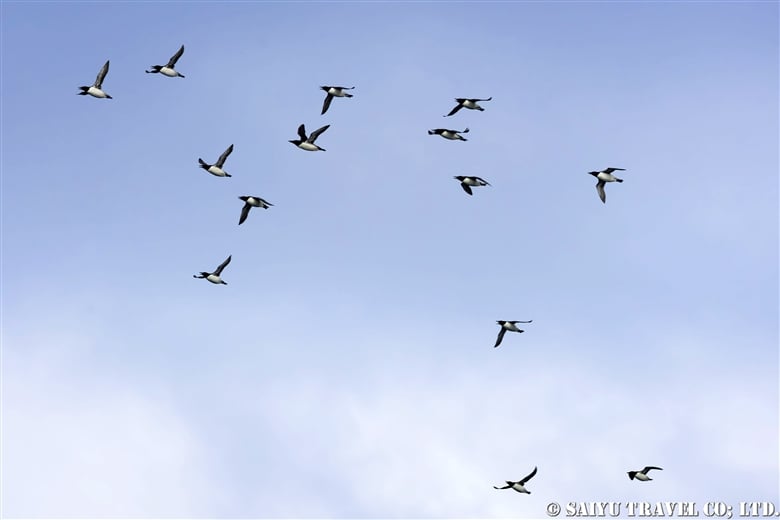
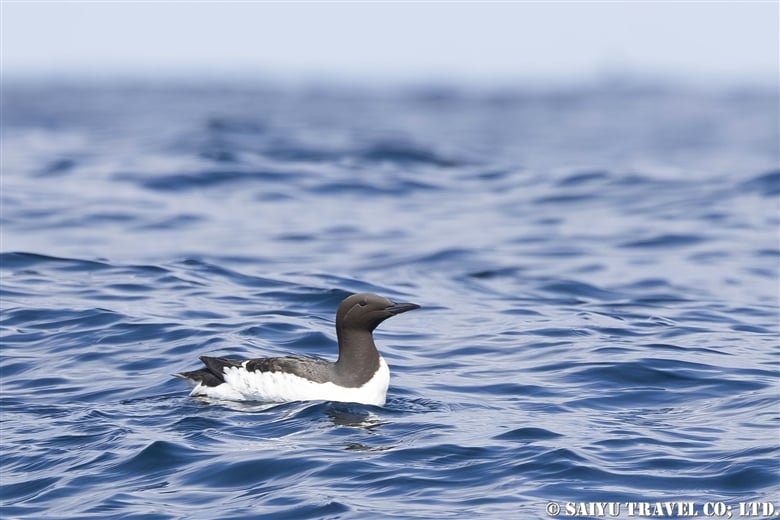
Spectacled guillemot Cepphus carbo
Spectacled Guillemots, with their very cute red legs and red mouth, breed in the crevices of the cliffs that stretch from south-west to north of Teuri Island. The moment when the Spectacled Guillemot takes off after running on the surface of the water is one of the most beautiful moments, when the colour of the sea, known as ‘Teuri Blue‘ and the bright red legs of the Spectacled Guillemot shine brightly. Take chance to watch it up close from a small seabird-watching boat that run s early in the morning (reservation is a must).
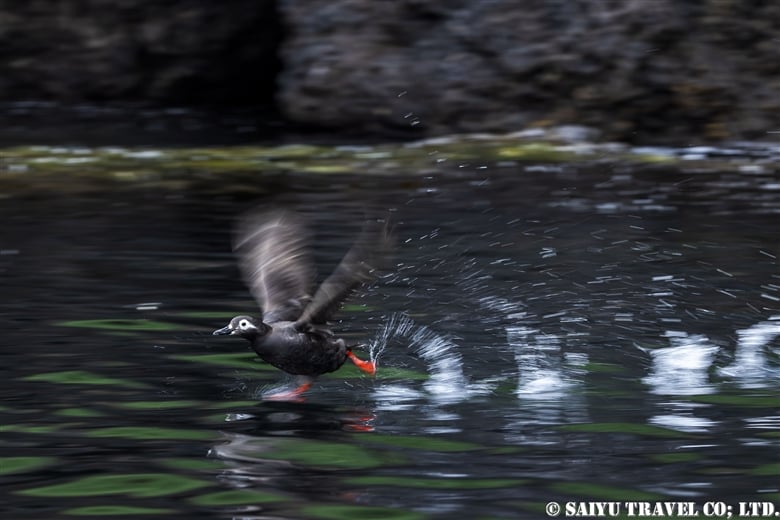
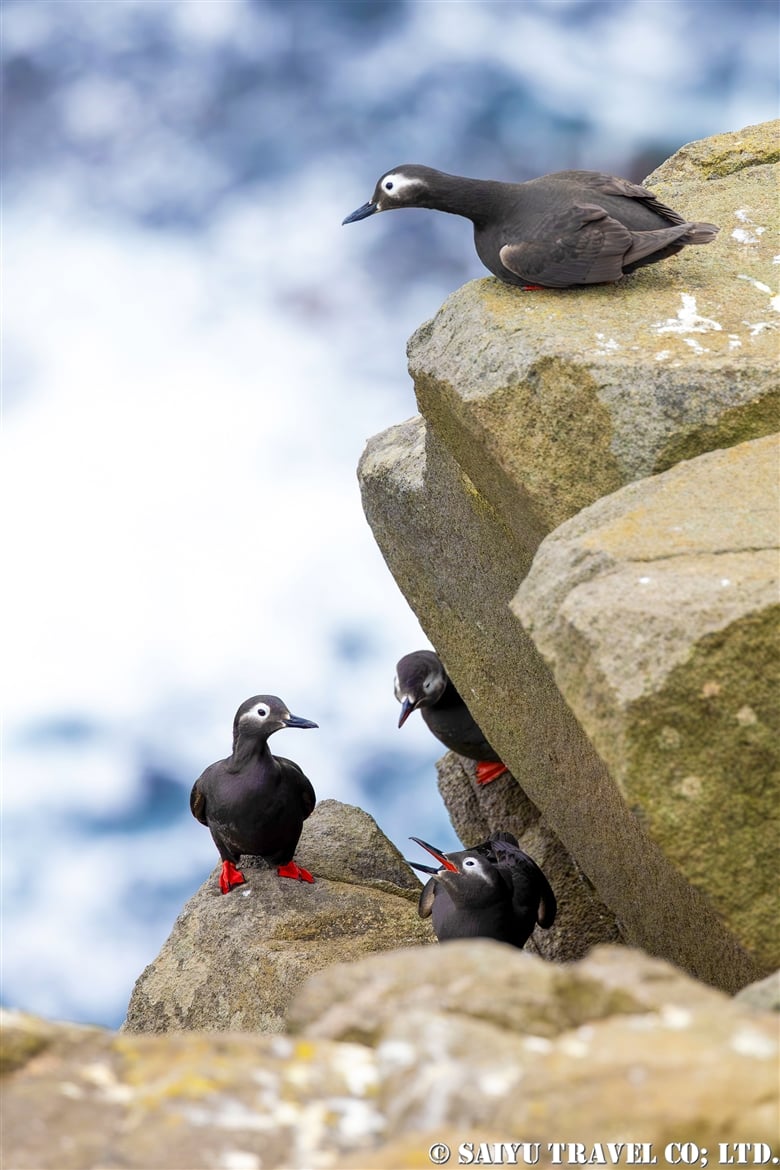
Rhinoceros auklet Cerorhinca monocerata
As its name suggests, Rhinoceros Auklet has a rhinoceros horn-like projection that appears during the breeding season from April to July. It is said that there are currently 800,000-1,000,000 rhinoceros breeding on Teuri Island, and the sight of them all returning to their nests at dusk is the one to behold. Because they dig holes in the ground to build their nests, which is quite unusual for bird species, photographers can observe them relatively closely when they return home.
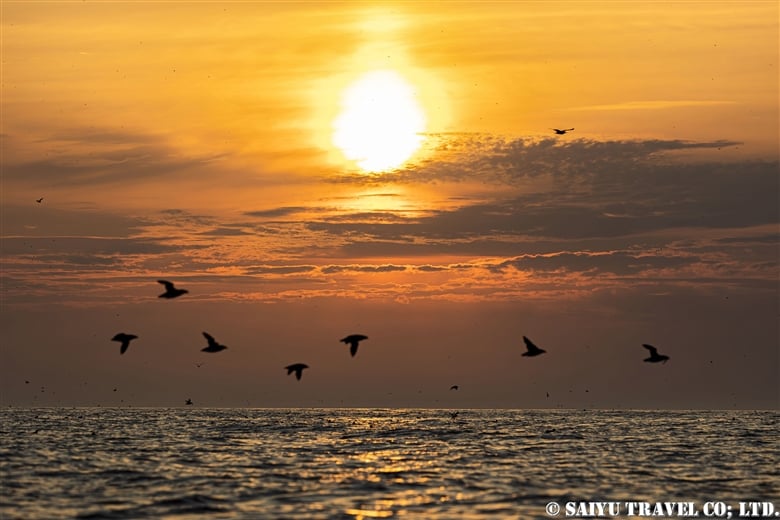
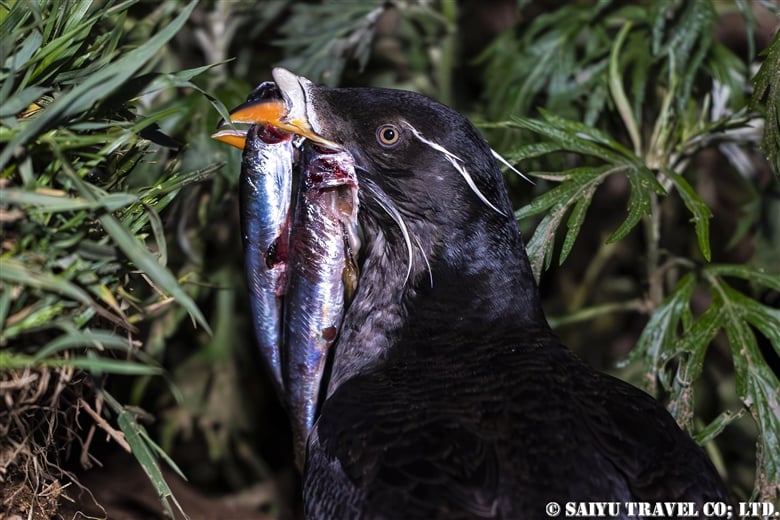
Ancient murrelet Synthliboramphus antiquus
On Teuri Island, they are seen every year from late May to early June. Several birds form groups up to 10 birds and feed on zooplankton and other organisms. Because they are very small and frequently dive, it is very difficult to observe them on days with high wave swell. It is said that they breed only on Teuri Island in Japan – take the rare chance to capture them here.
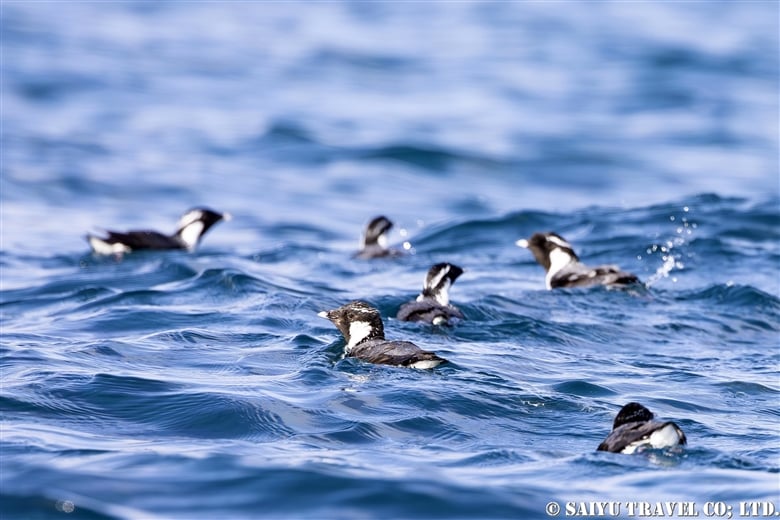
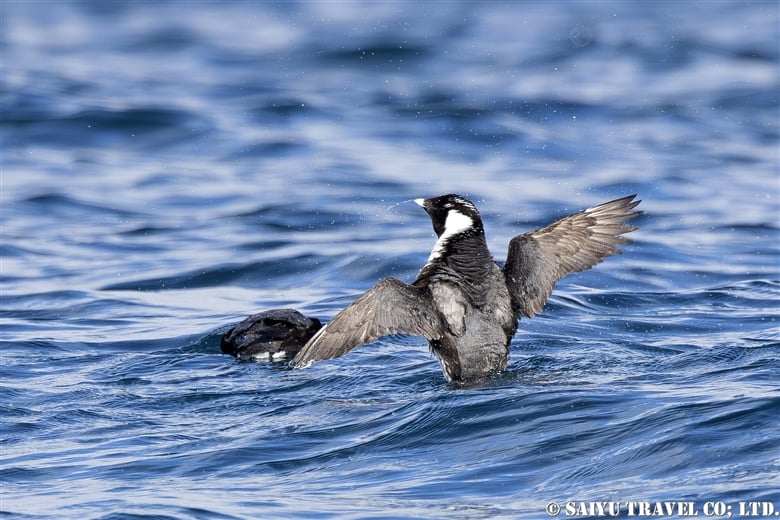
Pelagic Cormorant Phalacrocorax pelagicus
This cormorant normally lives in the open sea. During the breeding season when they come to Teuri Island, their entire bodies are covered with a amazingly beautiful sheen, and the base of its beak is stained red. They can build their nests in small bumps and hollows in cliffs, using saliva and mud to harden very fine nesting material, so natural enemies such as mammals cannot approach their nests.
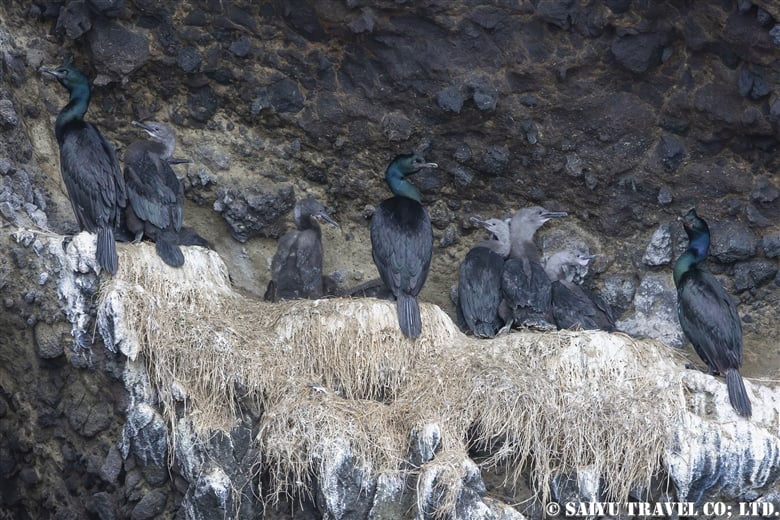
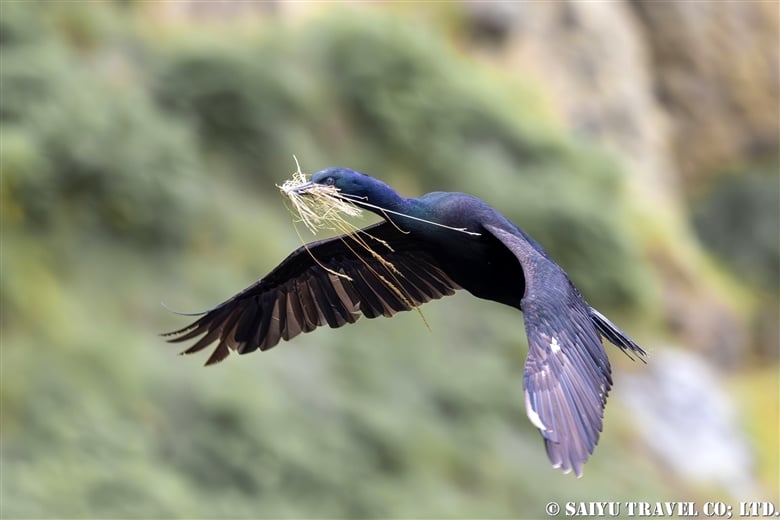
Japanese cormorant Phalacrocorax capillatus
A species of cormorant widespread across Japan. During the breeding season, its head turns white. Cormorants hunt deep underwater where visibility is poor, so they have blue eyes that are easy to see when viewing in the dark. They have a low oil content on their body surface to facilitate swimming easily underwater, and can be observed spreading their wings on rocks to dry their bodies after swimming.
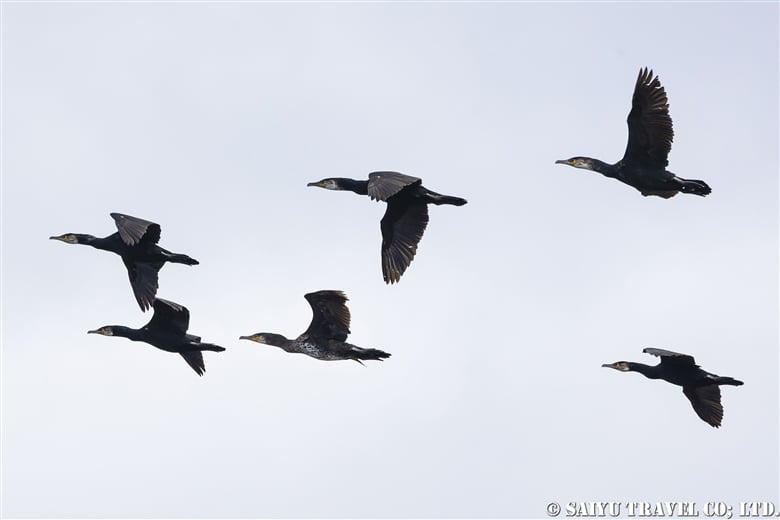
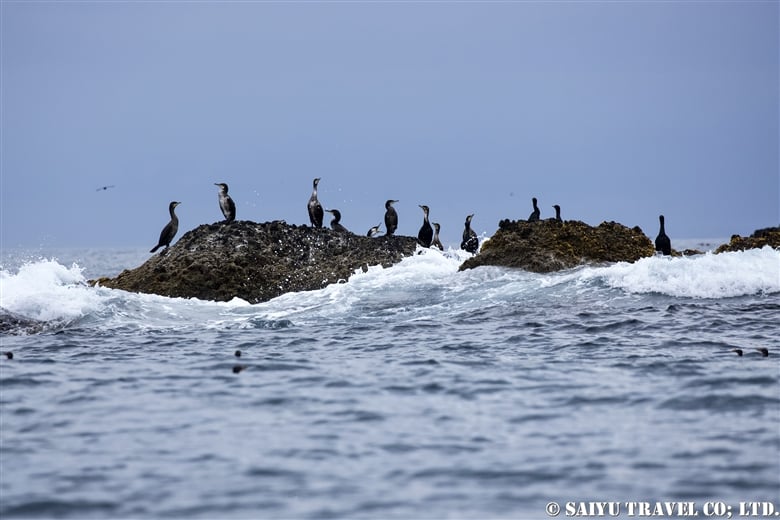
Black-tailed gull Larus crassirostris
This species of gull is characterised by its yellow legs and tail with a black band. On Teuri Island, their numbers have increased dramatically in recent years, with the estimated number of nests doubling from two years ago in 2021 to around 5,000 now in 2023. Kurosaki Beach (literally “Black-cape beach” in Japanese), a major breeding ground for Black-tailed gulls, is often called ‘Shirasaki Beach (“White-cape beach”)’ because its black rocks have turned completely white from their excrements.
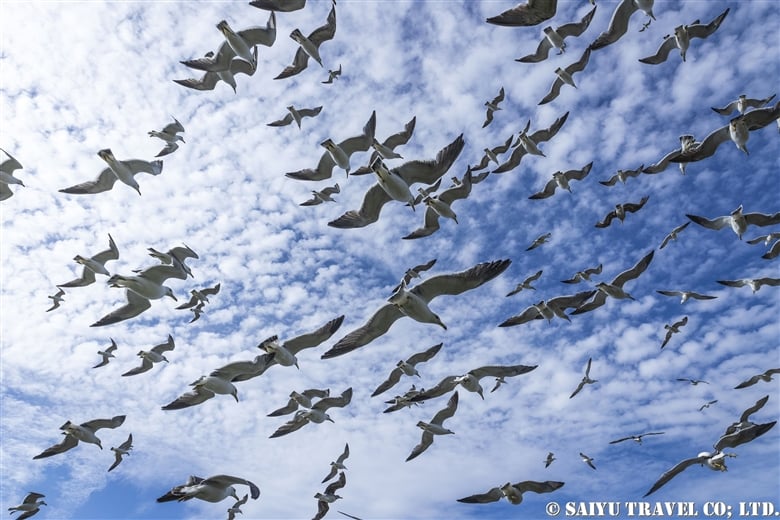
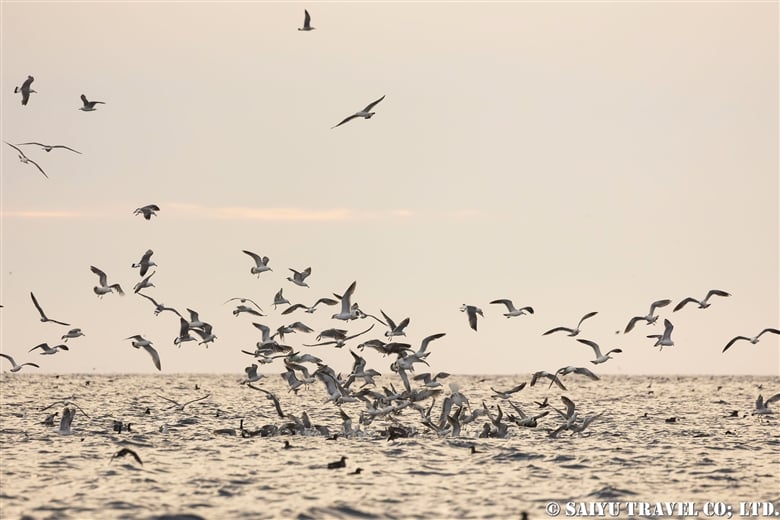
Slaty-backed gull Larus schistisagus
A large gull with pink legs and a bright white tail. It reigns at the top of the biological pyramid on Teuri Island, and will swallow an adult Rhinoceros Auklet up to 38 cm long awhole. Black-tailed gull chicks, pit vipers and sea urchins are other favorites. If you see sea urchin shells lying around town, they are often the remains of the Slaty-backed gull’s meal.
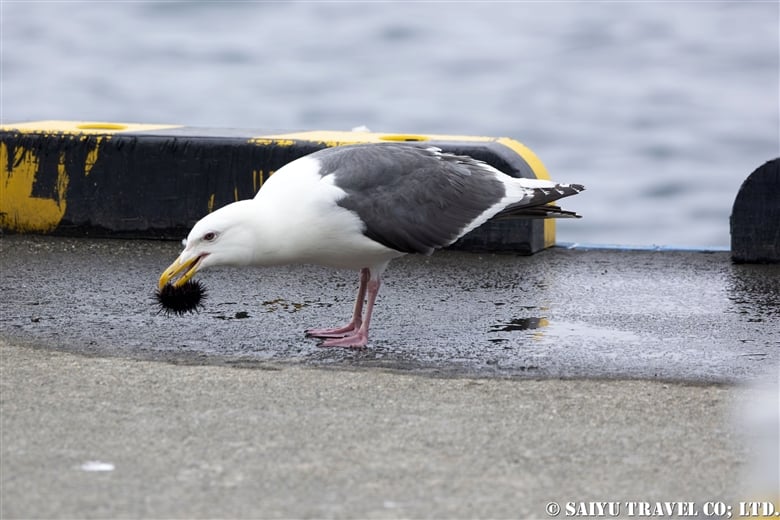
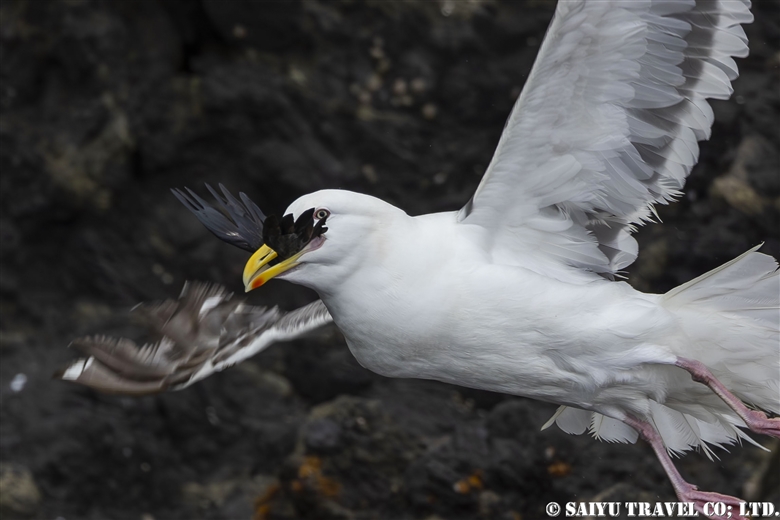
This Slaty-backed gull, just after swallowing a whole Rhinoceros Auklet, has its wings overflowing from its mouth and its chest is swollen with Rhinoceros Auklet!
Photographs & report: Wataru HIMENO
Observation period: May-July 2023, Teuri Island, Hokkaido, Japan
★ Visit our web site of TEURI ISLAND.
★Contact us to make arrangements for photographing seabirds on Teuri Island and Wildlife of Japan.
★Wildlife videos are also available on Youtube – we have the playlist as well.




